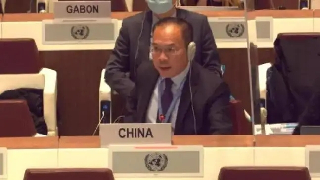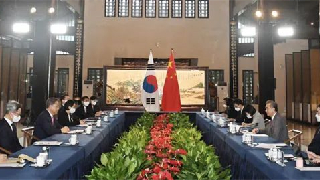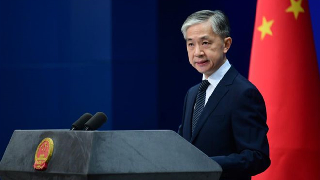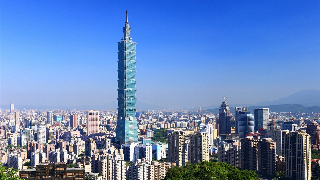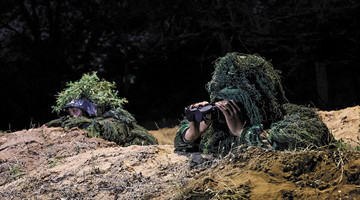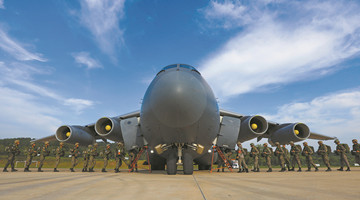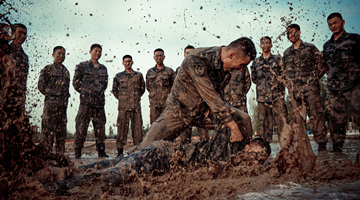By Li Ruijing and Wang Yi

On August 1, US Secretary of State Antony Blinken announced that the US would provide Ukraine with an extra USD 550 million military aid package. In all, the US has provided Ukraine with a total of USD 8.7 billion worth of military aid since the outbreak of the Russia-Ukraine conflict. In doing so, the US aims to perpetuate the Ukrainian crisis and serve its own interests to the greatest extent possible. Obviously, the military aid has turned out to be a tool for the US to keep “fanning the flames”, and a major helper in maintaining its hegemony.
Aiming to consolidate the US' global hegemony
The US military aid is by no means charitable. Instead, the US side is attempting to further expand its alliance and influence, so as to establish and maintain its global hegemony.
During the Cold War period, the US utilized the measure of offering military aid in its struggle for global hegemony with the Soviet Union. In order to contain the socialist camp, the US first of all, offered a large amount of military aid to western European countries under the framework of NATO to practically strengthen their confrontation power on the front line. In 1963, the number of countries and regions assisted by the US increased to 72 from 28 in 1952. After the 1980s, the US proposed a new containment strategy ” to further contain the Soviet Union, along with the scope of foreign military aid expanded again, having reached up to 102 countries and regions by 1988.
In the post-Cold War era, the US recklessly expanded its scope of military aid, intending to consolidate its global hegemony. After the 9/11 attacks, the US continued to expand the scope and amount of military aid, with major countries and regions in this regard such as Iraq, Afghanistan, Pakistan, and Africa included as the main targets for military aid, to win the global counterterrorism campaign. The amount of US military aid also jumped from USD 4.64 billion in 2001 to USD 16.47 billion in 2008. After Barack Obama took office, the US military aid to countries in the Asia-Pacific region has been on the rise. As of now, under the guidance of the so-called Indo-Pacific Strategy, the US has sped up its deployment in the region with the help of military aid and established exclusive “small groups” to provoke confrontation between camps.
Failure in manipulation and trapped by troubles
Military aid is a "double-edged sword" to the US, which is to benefit its security while having a backlash against itself.
Harsh bargains often lead to conflicts between the US and recipient countries. On the one hand, the recipient countries are really in need of military aid from the US to get direct security benefits in the short run; on the other hand, they are worried that the additional clauses to the military aid may grossly interfere with their internal affairs, then dissatisfaction with the US arising. At the same time, the long-term relationship based on military aid has also caused the recipient countries to rely heavily on the US for security, thus unequal bilateral security relations coming into being. The long-term fermentation of dissatisfaction and unequal relations has thus laid hidden dangers for the relationship between the US and recipient countries. For instance, 35 countries including Colombia, South Africa, and Bulgaria refused to grant US citizens immunity from prosecution from the International Criminal Court, which led to the termination of US military aid to these countries in 2003, totaling USD 47.6 million.
The US has also often been caught in the dilemma of handing its military aid to “future enemies”. This is obviously shown by the US military aid granted to the Taliban during the war in Afghanistan, which was actually used to train “grave diggers” for the US military in Afghanistan. In particular, the US military aid has often been sent to war-torn areas or areas of higher risks of war, and the influx of large quantity of weapons and equipment would be sure to even intensify tensions therein, thereby expanding the risks of war. Once the regime of the recipient country collapses, the new regime tends to have its own “anti-America genes” and uses the US military aid of diverse types to carry out anti-America activities, really making the US shoot itself in the foot.
The US military aid tends to deliver a hit to the US itself and bring wars and turmoil around the world. Almost every local war happening around the world today has been covered with the shadow of US military aid. Moreover, weapons aided by the US may get into terrorist organizations through a certain black market, increasing the risk of terrorism across the world. It can be said that the US military aid is but a backstage manipulator behind the global turmoil.

